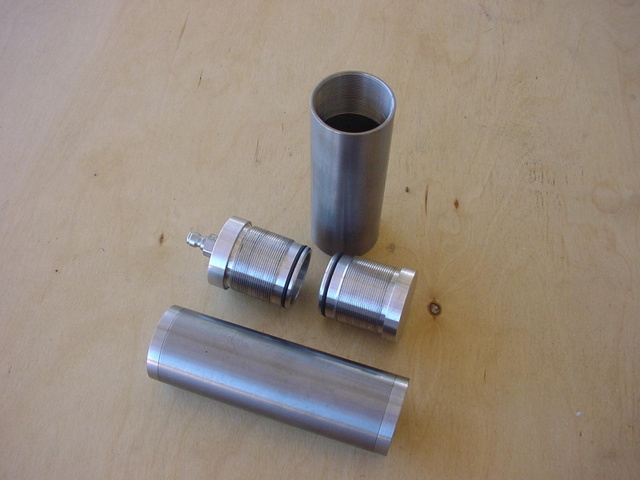I think we tend to be more afraid of things we don't understand and things we don't think we have control over. Cars are provably more dangerous than most things we deal with but we are not afraid of them because we think we have control. I think it is appropriate to have enough "fear" of air at several thousand pounds per square inch that we are careful with it and avoid mistakes. But it sounds like the OP doesn't understand the risk as well as he wants. I think that is healthy.
I would not worry about "crushing" the tank. Any compressive stress from your hand or a tool is off setting the force of the compressed air inside the tank trying to move the walls of the tank outward. If it is a carbon fiber tank, you do not want to apply force to the tank that damages the carbon fiber. If it is metal, you don't want to damage the metal. Your hand cannot do it and tools that apply force over a fairly large area of the tank won't do it.
Damaging threads is more of a possibility but I've seen experts recommend slowly loosening a gauge as a way to depressurize a gun. The air pressure pushing on the gauge with only a thread or two engaged seems worse to me than what you could do tightening the gauge. I see your biggest risk from tightening the gauge damaging the gauge, not damaging the threads. You will have all the threads engaged distributing the force. I would be very careful not to cross thread the attachment (and thereby damage the threads) but I would not worry much about tightening the gauge. But you only want to compress the O-ring that seals the gauge.
I don't have any guns with tanks but the nuts at the end of my airtubes seems like a bigger but in some ways similar issue as your need to thread the tank on. As with the gauge, the seal should be by O-ring so lots of force should not be necessary. If it leaks, I would depressurize and change the O-ring. I don't think you'll damage the threads by tightening, however.
I would not worry about "crushing" the tank. Any compressive stress from your hand or a tool is off setting the force of the compressed air inside the tank trying to move the walls of the tank outward. If it is a carbon fiber tank, you do not want to apply force to the tank that damages the carbon fiber. If it is metal, you don't want to damage the metal. Your hand cannot do it and tools that apply force over a fairly large area of the tank won't do it.
Damaging threads is more of a possibility but I've seen experts recommend slowly loosening a gauge as a way to depressurize a gun. The air pressure pushing on the gauge with only a thread or two engaged seems worse to me than what you could do tightening the gauge. I see your biggest risk from tightening the gauge damaging the gauge, not damaging the threads. You will have all the threads engaged distributing the force. I would be very careful not to cross thread the attachment (and thereby damage the threads) but I would not worry much about tightening the gauge. But you only want to compress the O-ring that seals the gauge.
I don't have any guns with tanks but the nuts at the end of my airtubes seems like a bigger but in some ways similar issue as your need to thread the tank on. As with the gauge, the seal should be by O-ring so lots of force should not be necessary. If it leaks, I would depressurize and change the O-ring. I don't think you'll damage the threads by tightening, however.
Upvote 0



